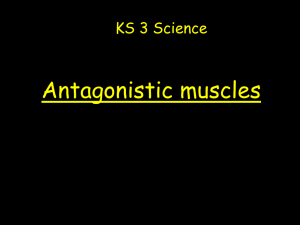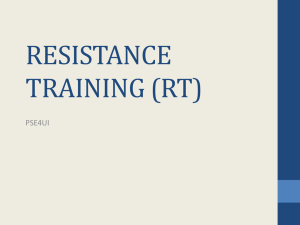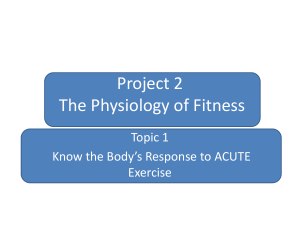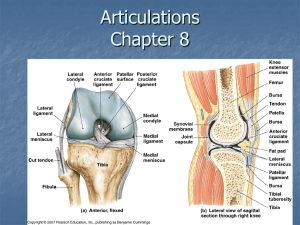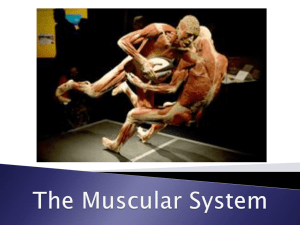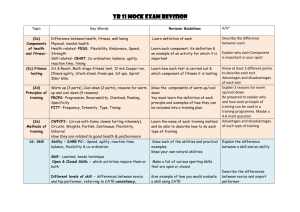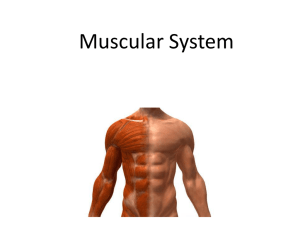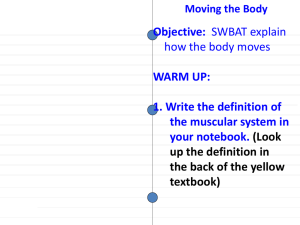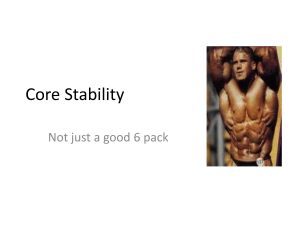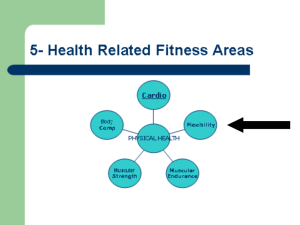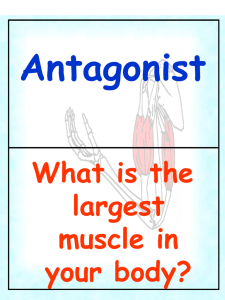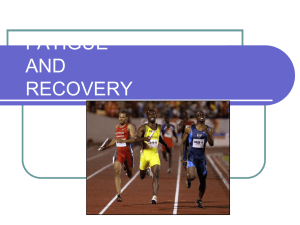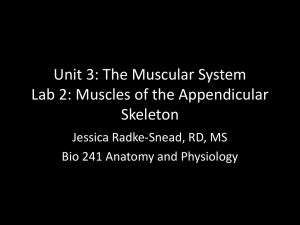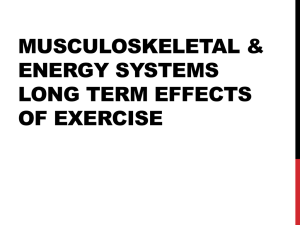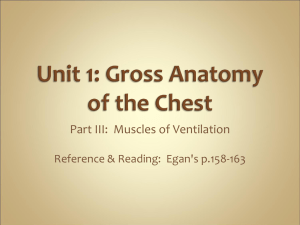Musculoskeletal system - Responses to exercise PPT
advertisement
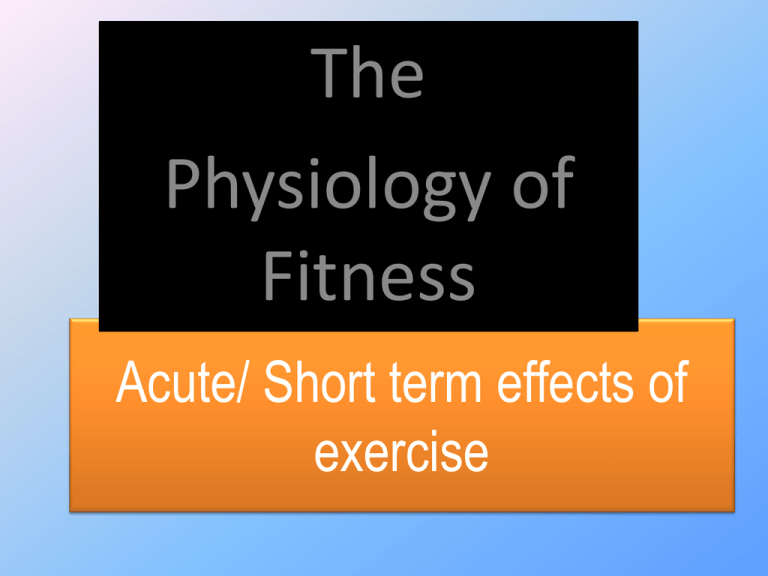
The Physiology of Fitness Acute/ Short term effects of exercise Task… In 4 equal groups, each group will be assigned a system to research. You need to make sure your group researches your particular area thoroughly and covers the following responses depending on what system has been assigned. Your group will then present back the findings to the rest of the group through a detailed and informative A3 poster. • Musculoskeletal response: increased blood supply; increase in muscle pliability; increased range of movement; muscle fibre micro tears • Energy systems: phosphocreatine; lactic acid; aerobic; energy continuum; energy requirements of different sport and exercise activities • Cardiovascular response: heart rate anticipatory response; activity response; increased blood pressure; vasoconstriction; vasodilation • Respiratory response: increase in breathing rate (neural and chemical control); increased tidal volume. Musculoskeletal system The short term effects on MUSCLES/ JOINTS and BONES Musculoskeletal response: increased blood supply; increase in muscle pliability; increased range of movement; muscle fibre micro tears Short term effects of & responses to exercise – Bones & Joints. • We produce more synovial fluid – Movement stimulates the secretion of synovial fluid. • The joints become warmer – Exercise increases the bodies temperature – The synovial fluid becomes thinner, making movement more efficient. • The range of movement increases – Due to the fact that the synovial fluid is thinner and warmer • All of this is because exercise makes our joints move quickly, so there needs to be more synovial fluid in the joints to allow and assist this movement When we start to warm up: • The muscles need energy in the form of glycogen to make the sarcomeres contract. – So the heart (cardiac muscle) beats faster to provide the glycogen to the muscles via the blood. • The conversion of chemical energy (from the Glycogen) to movement (contraction of the sarcomeres) causes a waste product – HEAT. – The muscle become warmer. • This also allows them to operate more efficiently, up to a point. • Once this point is reached, we need to get rid of heat, hence why we go red and get hot. – Our body is trying to remove the heat In a warm up… • We are working quite lightly (aerobically) – This means that the muscles are demanding Oxygen to continue contracting at that low intensity. – The nervous system detects this an makes the heart pump faster • Because our muscles are demanding more Oxygen we also begin to take up more Oxygen from the blood as it passes through the muscles – The capillaries become more dilated allowing this to happen Within the Muscles • More fibres are involved in contraction – This means that the contractions are stronger • Because more muscle fibres are contracting, they have less opportunity to rest, so there is more muscular contraction. Damage to the muscles • In the short term, muscles are damaged by exercise (microtears) – This is why we feel sore after exercise – Only with appropriate rest and food, can we recover • In fact we should recover stronger than before the exercise. • • Different types of muscles Each of the muscles reacts differently to exercise Skeletal – Demands Oxygen and Glycogen • • • At rest 20% of our blood goes to our muscles. In a warm up 50% of our blood goes to our working muscles In intense exercise 80% of our blood goes to our working muscles – Works harder – Warms up • Cardiac – Works harder (beats more often and with larger amount of blood in each beat) to provide the Oxygen and Nutrients to the skeletal muscle via the blood, and get rid of the Waste products of exercise (Carbon Dioxide, Water and Heat). • Involuntary Blood is shunted away from the parts of the body that don’t need it Eg the stomach gets 25% of our blood during rest. This can reduce P1/P2/M1


